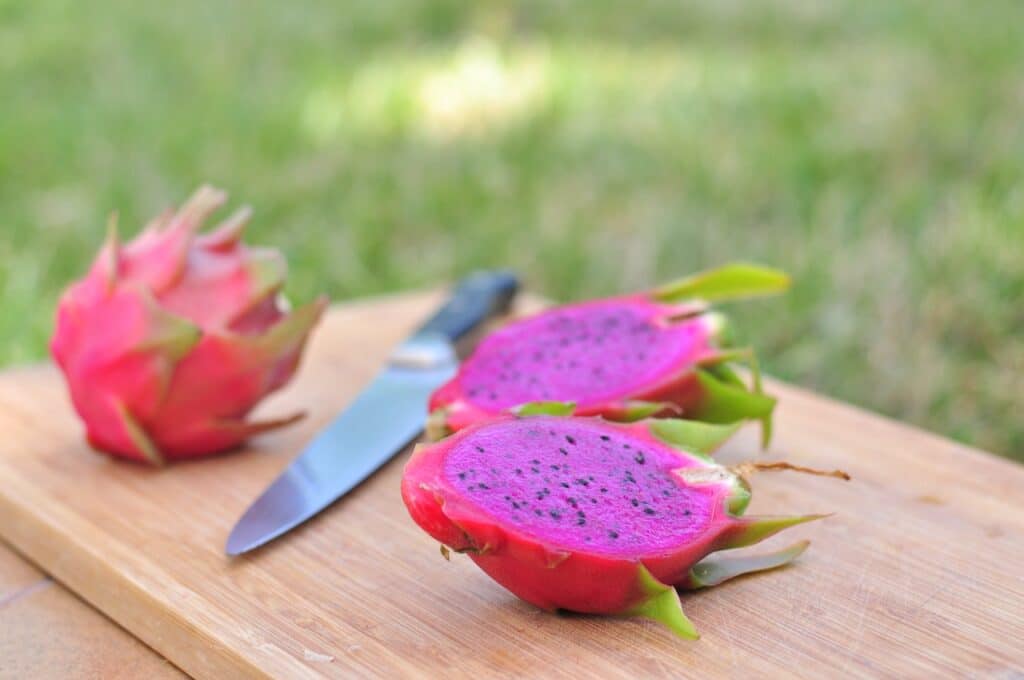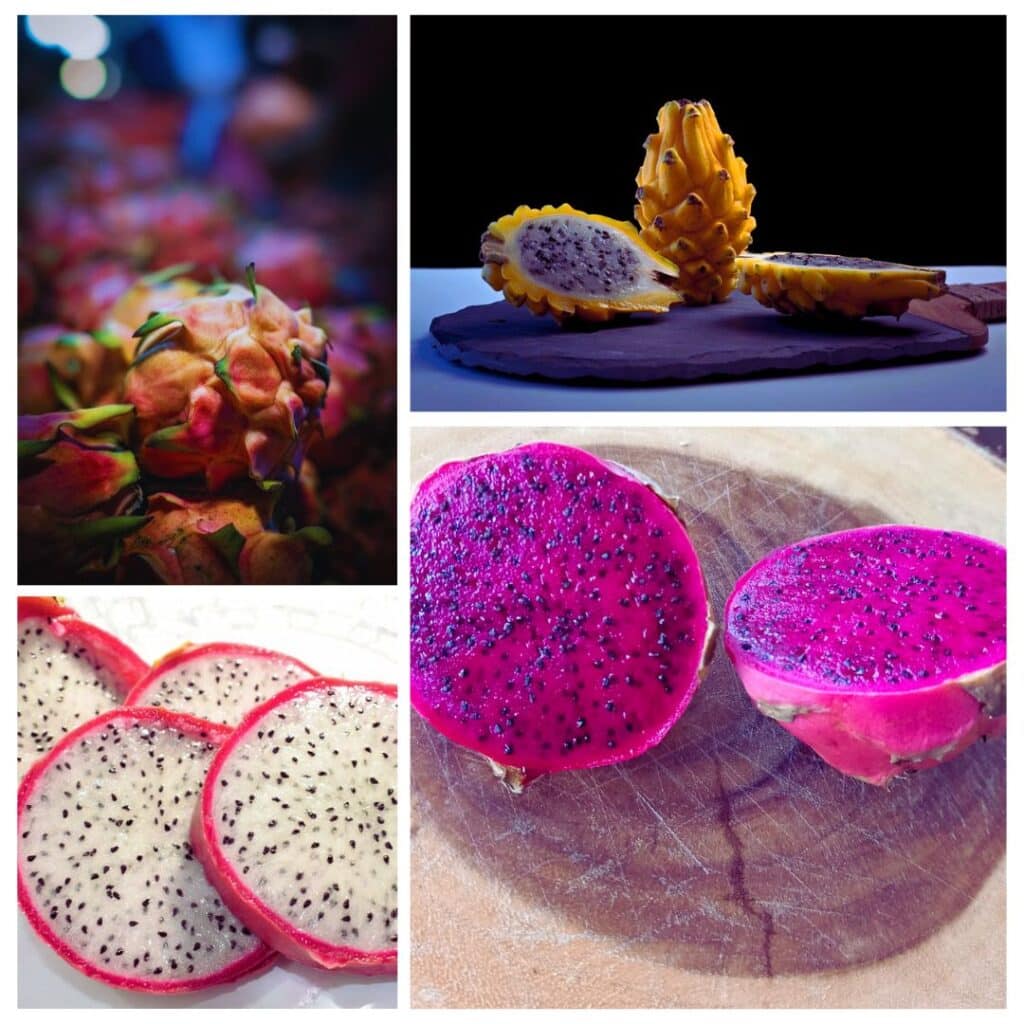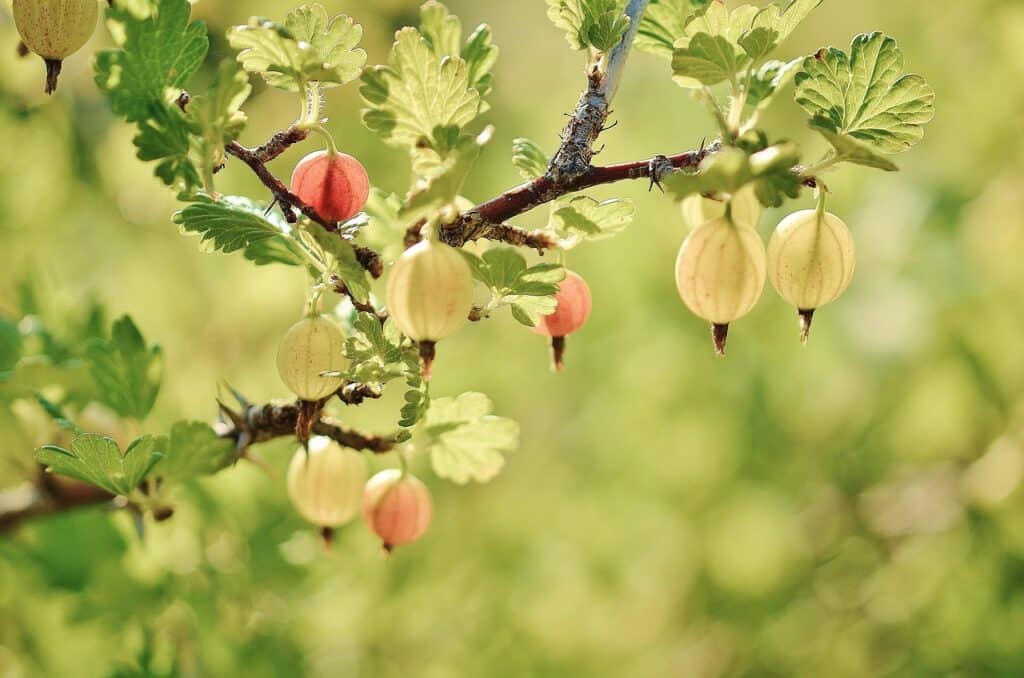Types of Currants
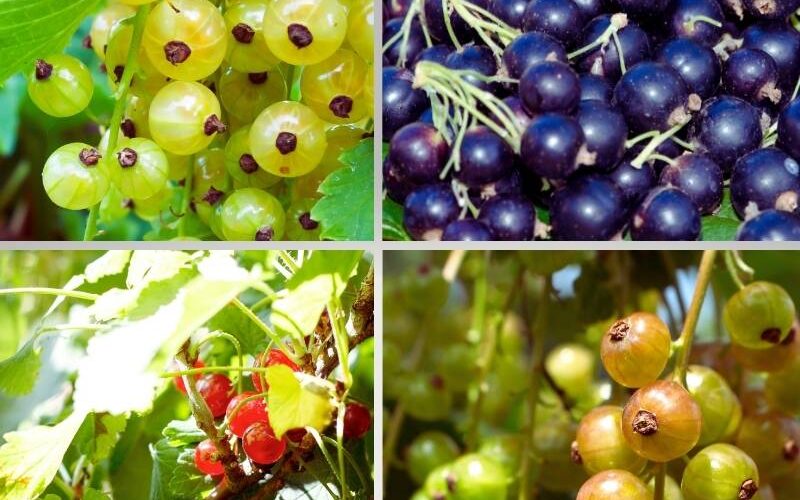
Currants come in many color and each of them are unique and best used for specific purposes. Black currants have 5 times the vitamin C of oranges and are specialist in producing liquors and good beverages, red currants are high in pectin thus popular for making Jelly, we also have white currants who have a softer, sweeter flavor and are better tasted fresh
Not only these ones, but there are many other currant cultivars that provides delicious and tiny fruits in other amalgam of colors, down below, we will be seeing the different types of currants, their varieties, and many of their unique characteristics.
The next article will give a brief description of the different types of currants and their varieties. If you are planning on growing currants, this guide will help you select the best currant variety for your gardening purposes.
Red Currants
Alongside with the black currants, red currants are one of the most popular types of currants. They have a sweet and tart flavor and are pretty high in pectin, which makes them popular options for making jelly, jam and other sauces.
These are some of the different red currant varieties:
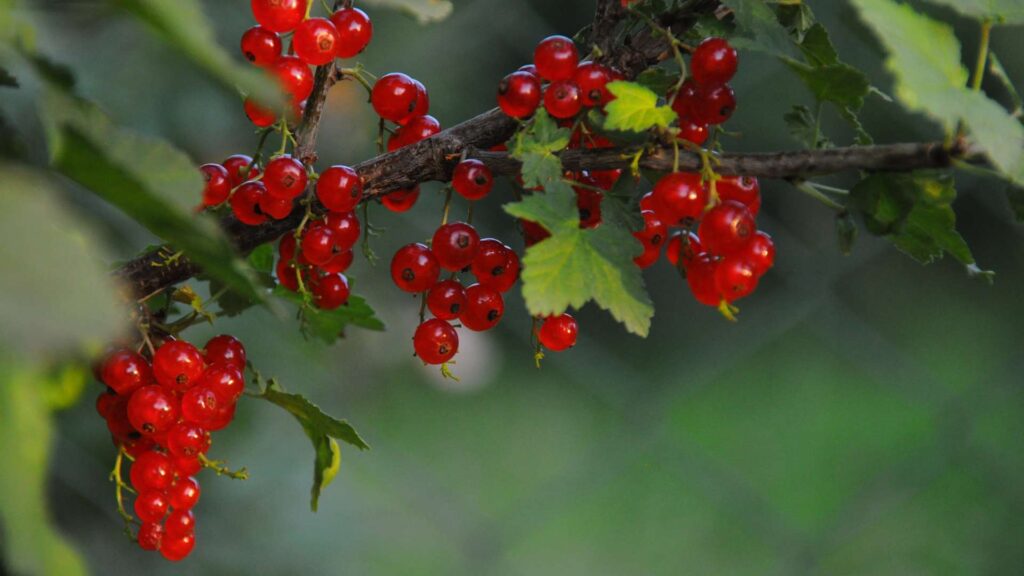
Red Currant Varieties
| Name | Ripens | Mildew Resistance | Fruit Size | Origin | ||
| Rovada | Mid-Summer | Low | Large | Netherlands | ||
| Red Lake | Mid-Summer | Medium | Medium | USA | ||
| Tatran | Mid-Summer | Medium-High | Large | Czechoslovakia | ||
| Jonkheer van Tets | Early-Summer | Medium-Low | Medium | Netherlands | ||
| Stanza | Mid-Summer | Medium | Medium | Netherlands | ||
| Wilder | Early-Summer | Medium-High | Small | USA | ||
| Stephen’s No. 9 | Mid-Summer | Medium | Large | Canada |
Rovada: Native from the Netherlands, Rovada is a popular variety in the commercial market due to it’s quality and high-yielding properties. It’s resistant to leaf spot but not so much for Mildew. It has an average flavor and it’s easy to harvest due to it’s long fruit clusters.
Red Lake: This variety comes from the USA and it’s a good choice for home growing. It ripens in mid-summer providing an easy harvesting thanks to it’s long and loose fruit clusters. The berries are juicy and flavorful and a good choice for desserts.
Tatran: This hybrid from Czenchoslovakia comes from a mix of red lake and goppert. This mid-late season variety has really long fruit clusters which makes harvesting a pleasant experience. It provides pretty large, somewhat sweet fruits that are also good for culinary purposes.
Jonkheer van Tets: This is a Dutch variety that provides a good amount of fruit in the early-summer. It’s not very resistant to Mildew. The fruits are sweet and good for culinary purposes.
Stanza: Another variety from the Netherlands. This cultivar ripens in mid to late-summer, has an acid, medium sized juicy fruit. It is a pretty vigorous cultivar that will not let you down during the yearly harvesting season. It has a moderate resistance to Mildew.
Wilder: This is a Cultivar from the USA that ripens in early to mid-summer. The berries are juicy and have good quality, a very good choice for making jelly. Pretty resistant to mildew. They are really good choice for home gardeners as the fruits can hang on the stems for a while before they over-ripe.
Stephen´s No. 9: This extravagant named cultivar comes from Canada. It’s a pretty vigorous variety that provides pretty large fruits. Moderately resistant to mildew
Black Currants
If you want to brew wine from a currant shrub, then this is the type of currant you are looking for. Black currants are sweet, popular for wines, juices, jams and any other culinary recipe you can think about (I mean cooking is free after all).
Let’s see some of the different black currant varieties.
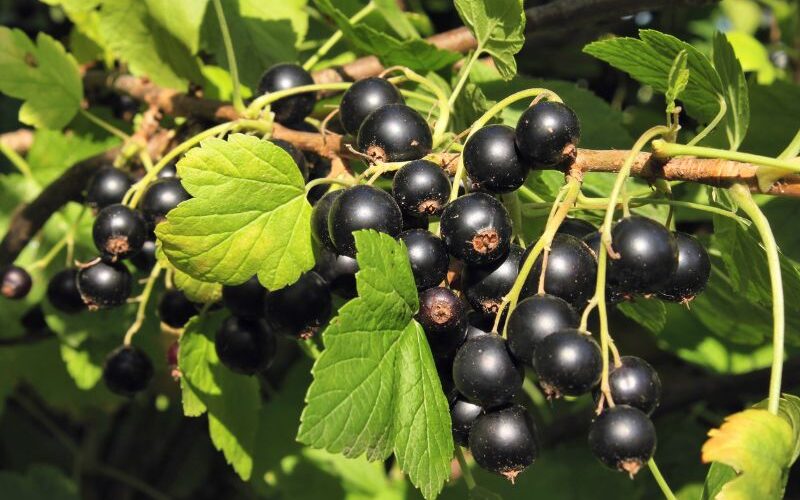
Black Currant Varieties
| Name | Ripens | Mildew Resistance | Fruit Size | Origin | |
| Titania | Mid-Summer | High | Very Large | Sweden | |
| Strata | Early-Summer | Medium | Very Large | Germany | |
| Swedish Black | Early-Summer | Medium-Low | Large | Sweden | |
| Boskoop Giant | Early-Summer | Medium | Large | Netherlands | |
| Crandall | Late-Summer | High | Large | USA | |
| Ben Alder | Mid-Summer | High | Medium | Scotland | |
| Champion | Early-Summer | Medium | Medium | England |
Titania: Native from Sweden, this variety ripens uniformly in early to mid-summer and is very powerful against mildew and White Pine Blister Rust. It bears very large fruits which are high in acidity and mild in flavor. A good choice to select if you don’t want to worry too much about diseases and plan to let your currant shrub sit quietly in your back garden.
Strata: This variety comes from Germany and it’s ready to provide you with fruits bigger than Oktoberfest beers. Maybe not that much, but the cultivar does provide good sized sweet fruits suitable for fresh eating or processing. Despite this, fruit yields are reported to be quite low.
Swedish Black: Just as the name suggest, this is a cultivar native from Sweden. It’s an early ripening cultivar which provides very sweet fruits to enjoy in the beginning of the summer. Furthermore, it has one of the highest sugar contents and a very good flavor. With this cultivar yielding large fruits, it’s only downside is it’s low resistance to mildew.
Boskoop Giant: This variety is native from the Netherlands. It’s another early ripening variety that yields large sized fruits. It has long, loose clusters that hang well on the bush after it ripens, which makes them a very good cultivar at the harvesting time. It has a decent Mildew resistance.
Crandall: This USA variety provides a good all-round format. It ripens sweet, large, mild flavored fruits in mid to late summer. It is very resistant to Mildew and it has a very pleasant ornamental look. The canes are not very strong though so it’s important to make a trellis for it.
Ben Alder: This cultivar is native from Scotland. This berries are very high in vitamin C and it yields a substantial amount of high quality fruit in the early to mid-summer. This and the fact that it can me mechanically harvested makes Ben Alder be the perfect cultivar for juice making in commercial and local production.
Champion: Native from England, this cultivar has very vigorous canes that can bear mixed currants in terms of size. It has a moderate resistance to Mildew and the fruits are high in quality and mild. They don’t ripe evenly.
White Currants
This type of currant grows in the same way as red currants and gooseberries. They have a creamy mild sweet flavor and are often eaten fresh, but they are also used for jellies, jams, and mixed with other fruits in desserts.
Here are some of the different white currant cultivars.
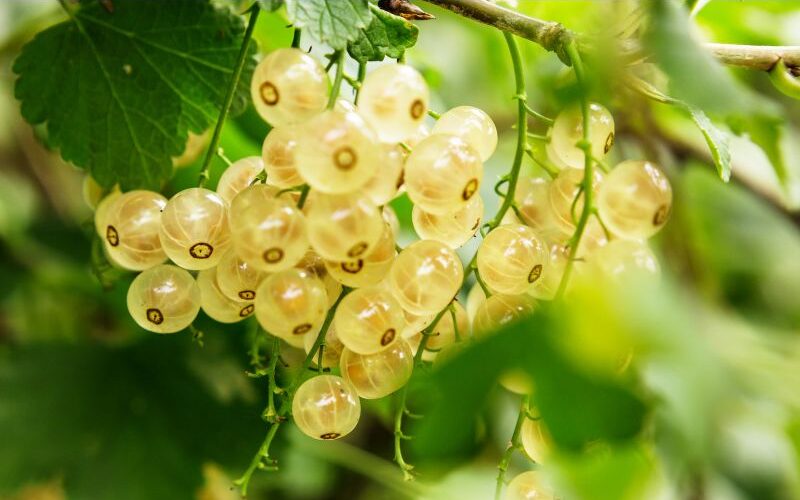
White Currant Varieties.
| Name | Ripens | Mildew Resistance | Fruit Size | Origin | |
| White Dutch | Mid-Summer | High | M-Small | Netherlands | |
| White Currant 1301 | Mid-Summer | Medium | Medium | Sweden | |
| White Imperial | Early-Summer | High | M-Large | USA | |
| White Versailles | Mid-Summer | High | M-Large | France | |
| Blanka | Late-Summer | – | M-Large | Slovakia | |
| Primus | Mid-Summer | High | Medium | Slovakia |
White Dutch: This Dutch variety provides juicy, high quality sweet fruits. The fruits are quite small but it has a good mildew resistance.
White Currant 1301: This cultivar is native from Sweden. It has moderately vigorous canes that provide medium sized berries with a decent resistance to powdery Mildew.
White Imperial: This cultivar comes from the USA. It provides pretty good sized juicy, tender, sweet berries that are great for eating straight out of the very vigorous canes. It has a great mildew resistance. The berries are similar in size to the red lake currant. A very good cultivar to have in a garden.
White Versailes: Native from France, this mildew resistant variety provides medium-large sized juicy berries. Born in long clusters of vigorous canes, it’s a good cultivar to grow.
Blanka: This mid to late-summer cultivar comes from Slovakia. It provides sweet moderately large fruits. It is popular for being a high yielding variety and has a good resistance to cold temperatures.
Primus: It is native to Slovakia. This cultivar provides sweet, good flavored berries. It is a high yielding cultivar that ripens in early to mid-summer. With is high resistance to powdery mildew, is another very attractive all rounder
Pink Currants
There is only 1 variety which is called “Pink Champagne“. It’s grown in the same way as red currants. It provides a high yielding amount of pinkish berries and it is reported to be disease resistant.
References
1- Danny L. Barney, Ph.D. Currant Varieties for the Northwest & Intermountain West.
2- Hummer, K.E. and D.L. Barney. 2002. Currants.
3- https://berrycrops.net/about-industry-leadership.php

